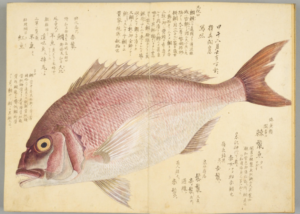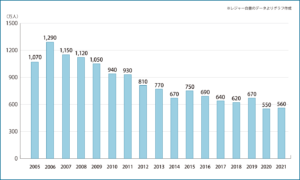Salmon Fishing in Japan
It is not widely known to the visitors to Japan, but you can do salmon fishing in Japan, if you apply for it properly. Among all the salmon related species, Chum salmon, Sake, is the most popular fish species in the public. The relationship between Sake and Japanese people has a long and intricate history.
This article shows about the Japanese salmon in general and introduces three Japanese style fishing for this fish, float-lure fishing, cast-and-wait style and one with a whip rod.
Species
The salmon you can catch in Japan is Chum salmon (Oncorhynchus keta), and it is called Sake. This is anadromous fish, which lives in the northern Pacific and Beringian arctic sea and comes back to the rivers on the coasts around these waters.
Sake is the second biggest salmon family species in Japan, following the Masu-no-suke or Chinook salmon. The average size of the fish coming up the river is about 65 cm with about 3.5 kg weight. There are some bigger individuals that have the length of 1 m with over 20 kg.
As you know they travel in the ocean and return back to their mother rivers. In autumn, Japanese Chum Salmon swims out to the Sea of Okhotsk, after it hatches and swims down to the sea, to spend their first winter. Then, it is said that they travel further to the north Pacific Ocean and the Bering Sea, to spend a few years there. Some research tells us that some Sake fish travel to the bay of Alaska. When the time matures, they travel back to Japan along the Kamchatka peninsula and northern islands. Most of the fish returning to spawn are 4 and 5 years old, but it varies from 2 to 7 years old.
One interesting fact is that only the Chum salmon from Japan travels on such a scale. Chum salmon from the coast of the American continent does not travel to the west side of the Pacific Ocean and Russian origin fish does not reach the east side of the ocean. After their long travels in the ocean, mature fish are coming back to their mother rivers in Japan from September to November. And the salmon fishing season in Japan is from late summer to autumn.
Salmon fishing regulation in Japan
In Japan, salmon is strictly protected. And fishing for salmon is allowed only in a limited number of rivers. According to the Act on the Protection of Fisheries Resources, anyone cannot catch salmon in the river, except one that is getting approval from the related organization. For anglers to go fishing for salmon, they need to apply to the Fisheries Cooperative Association which controls the resources in a certain river. For this legislative restriction, anglers apply to be researchers, and to get salmon for research purposes. In many rivers, we cannot use the treble hooks, and in some, barbed hooks are prohibited. We have to be very careful about local regulations of each river.
Fishing for salmon with flies and lures
There are anglers who enjoy salmon fishing with flies. Their fishing style is quite similar to that of North America. As many Japanese salmon rivers are narrower and many anglers use 9 ft rods, with #8 - #10 lines. For some examples of flies, you can take a look at some photos from this link.
Another style for salmon is lure fishing. These lure anglers are using spoons (8 to 18 g) and deep diving minnows (7 to 10 cm.) Salmon are often swimming up the rivers, tracing the deepest part of the river. And their choice of lures are to reach there. As for the main line, nylon of 10 to 16 lb or braided line of 1 gou (about 0.17 mm thickness). The popular length of rods are from 7 ft to 9 ft.
Float-lure fishing
One of the unique ways of fishing salmon is float-lure fishing. It uses a float, line through type, and the lure is tied on the end of the hook leader extending to 1 to 1.5 m from the float.
It uses the float and the spoon (or other types of lures) of 25 to 60 g, that is connected to the hook leader of 5 to 6 gou (0.37 to 0.40 mm thickness) nylon. At the place of 1 to 1.5 m from the lure, it has the float. This float is the one specially made for this fishing.
This float allows the angler to keep his lure at targeted depth, in the longer distance. When you want to cast as far as possible, the solution is to use the heavier lure. But in doing so, the lure’s swimming depth tends to be deeper, unless you retrieve faster. Using this float, you can use heavier lures while you trace the targeted depth.
For this float-lure fishing, anglers prefer to use the special types of lures developed for this style. Some are spoon style, and others are more like a jig.
The weight of lures are around 45 g. Some are made from materials with lighter density, such as Zinc or hybrid (plastic and lead). Since the important key of this fishing is to trace the certain depth while retrieve, the balance between sinking speed and swimming depth is important.
The octopus is attached to the hook of the lure. And in some cases, the bait is added on the hook. The bait can be strip of a mackerel or Pacific Saury.
Fishing with special attractors, cast-and-wait style
Namely, this fishing style for salmon involves casting from the shore. In it, the act of fishing is very simple, and this style is enjoyed by many local saltwater anglers who live near the salmon river mouth.
The uniqueness of cast-and-wait style fishing is in the rig. It uses the special attractors on hooks, in the multi hooked dropper rig.
The hook has an octopus, cylinder shaped float, and bead. The key of this rig is to have the baited octopus floated in the water and moves naturally. The bait of fish meat stripe will be attached on hooks. They use pyramid shaped sinkers of 30 to 50 gou (110 to 190 g), to hold the rigs in position under the strong current.
The fishing with whip rod for salmon
Last but not least is salmon fishing with a whip rod. The whip rod needs to endure the salmon’s run and it is literally very strong.
This whip rod of 8 to 9 m length is attached with the nylon line of 3 gou (0.29 mm thickness). This fishing style is tracing the current of the river without any floats. In the image above, the wing shaped markers are helping anglers to control their hooked bait. With the split shots, the hook, baited with stripe squid or Pacific Saury meat, can trace the best places in the river.
I assume that the most interesting point for you is how to deal with the pull of salmon with such a whip rod. To explain the situation, this video can tell you more than any words.
The Japanese whip rod can handle the fish, with its strong and elastic parabolic action. As one of my articles explained about characteristics of Japanese rods, there are differences in how one rod performs in terms of strengths in its parabolic actions. These traditional techniques of rod making achieve the superb cushioning and pulling power in salmon fishing rods.
Since salmon are coming back to rivers, it is very close to people’s lives and culturally important in the salmon producing area. For these, we need to remind ourselves to respect the rules and enjoy this Japanese culture of salmon fishing, just as there are strict regulations in many salmon rivers outside Japan.
Below is the list of rivers which issue permits to fish for salmon in Japan
- Churui-gawa (Hokkaido)
- Hamamasu-gawa (Hokkaido)
- Sagae-gawa (Yamagata)
- Oguni-gawa (Yamagata)
- Kuji-gawa (Ibaraki)
- Naka-gawa (Ibaraki)
- Kinugawa (Ibaraki, Tochigi)
- Omoi-gawa (Tochigi)
- Watarase-gawa (Tochigi, Ibaraki)
- Ara-kawa (Niigata)
- Igarashi-gawa (Niigata)
- Miomote-gawa (Niigata)
- O-gawa (Toyama)
- Sho-gawa (Toyama)
- Tedori-gawa (Ishikawa)

